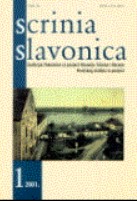KRONOLOGIJA POTRESA U SLAVONIJI IZMEĐU 1739. I 1835. GODINE (PREMA PODACIMA IZ ZAPISNIKA FRANJEVAČKIH SAMOSTANA U BRODU, NAŠICAMA, OSIJEKU, VUKOVARU I ŠARENGRADU)
CHRONOLOGY OF EARTHQUAKES IN SLAVONIA BETWEEN 1739 AND 1835 (ACCORDING TO THE RECORDS OF THE FRANCISCAN MONASTERIES IN BROD, NAŠICE, OSIJEK, VUKOVAR AND ŠARENGRAD)
Author(s): Mislav Gregl, Maja Matasović, Tamara TvrtkovićSubject(s): Physical Geopgraphy, Local History / Microhistory, 18th Century, 19th Century
Published by: Hrvatski institut za povijest
Keywords: earthquakes; Slavonia; 18th and 19th centuries; monastic records; terminology analysis;
Summary/Abstract: During the 18th and the 19th centuries, Franciscans in the monasteries throughout Slavonia wrote the so-called protocolla, chronicles that recorded not only ecclesiastical, but also secular events. Among the themes that some of the writers chose to put down for posterity, descriptions of earthquakes seem particularly interesting today, in 2020, when Croatia has witnessed the devastating effects they sometimes cause. This paper chronologically lists every description found in the remaining chronicles from the monasteries in Brod, Našice, Osijek, Šarengrad and Vukovar, between the years 1739 and 1835, both in the original Latin, and in translation into Croatian. These descriptions vary in the amount of data they provide: sometimes they only, if at all, record that an earthquake happened on a certain date (and sometimes they even differ among themselves on the exact date), but sometimes they record the exact time, the number of intervals, the intensity, the damage and the direction of expansion of an earthquake. The paper also analyses the terminology used in the cited texts, to facilitate the reader’s understanding and the mutual comparison of these descriptions, as well as the comparison with today’s methods of describing earthquakes. For this purpose, it also includes three descriptions from the territory outside modern Croatia: two from Hungary and one from Spain. In this way, the paper produces valuable material for interdisciplinary research dedicated to the history of seismic activities in Slavonia in the late modern period.
Journal: Scrinia Slavonica
- Issue Year: 2021
- Issue No: 21
- Page Range: 159-184
- Page Count: 26
- Language: Croatian

